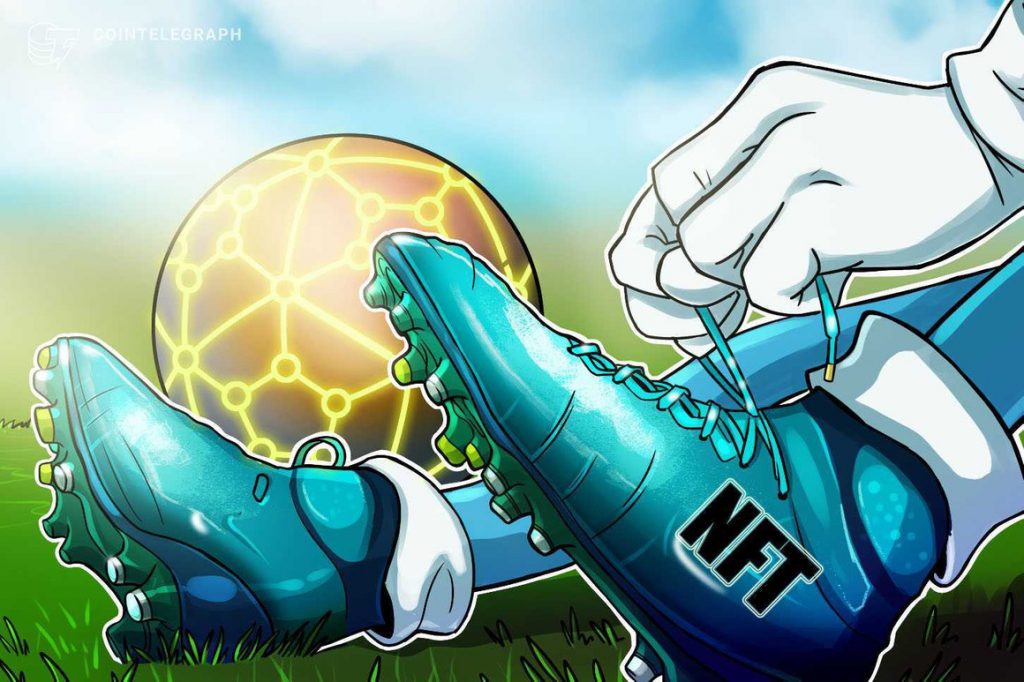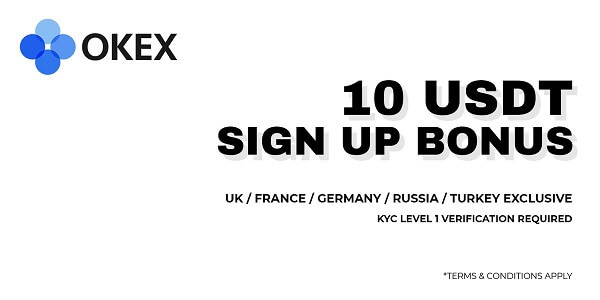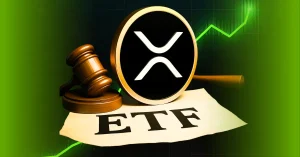NFT traders STEPN to a new groove — Is move-to-earn the future of fitness or another fad?

Axie Infinity was a pioneer of the play-to-earn movement and the project inspired new Web3 applications that aspire to apply the earning model to their respective ecosystems.
The latest project to join the move-to-earn movement is STEPN, a Solana-based Web3 application where owners of the nonfungible token (NFT) sneakers earn as they walk.
STEPN has programmed a few factors that determine just how much a person can make with its sneakers and the Green Satoshi Token (GST) is STEPN’s in-game token that currently trades for $7.30. Over the last 30 days, the token has surged over 77%, but is it sustainable?
What’s interesting about the move-to-earn phenomenon is that it’s essentially a form of P2E since it gamified fitness through a digital asset, the sneaker. Regardless of how one slices it, NFT holders must engage in the application mechanics to receive the reward.
While STEPN might be racking up some serious profits for investors now, there are already a growing number of competitors emerging, and new earning models could soon make it nothing more than a passing fad. Play-to-earn was all the rage in 2021, but now that movement is a mere shadow of its former self. This should lead investors to question the sustainability of the move-to-earn trend.
Move-to-earn DApps go parabolic
Incentivizing behavior is not a novel concept, especially in the health and fitness space. In fact, SweatCoin, a project founded in 2018, was one of the first applications that would pay its users digital currency to exercise.
There are other crypto fitness applications such as Dotmoovs, Calo and Step, each with their respective in-app reward tokens. This means that STEPN isn’t pioneering the movement, but it could be revitalizing it.
The project is currently in beta, with new users requiring a code to participate. In branding and packaging move-to-earn, STEPN gained popularity among crypto and NFT pundits and had a parabolic spike in upward growth. Cumulatively, STEPN has amassed over 200,000 users over its lifetime with consistent volume. In the last seven days, over 32,800 new sneakers have been minted.

On average, a STEPN sneaker can earn a user up to $20 per day, while a premium tier sneaker can make users hundreds of dollars at the current price of GST.
Similar to Axie Infinity, users must first put in initial capital investment to begin earning rewards. There were 99,999 NFT sneakers available for mint, but just like Axie Infinity, users can breed their sneakers during sneaker minting events (SME).
Currently on Magic Eden, a secondary marketplace, the cheapest STEPN sneaker is on sale for 16.56 Solana (SOL), or $1,628 at the time of writing, and the most expensive is 300 SOL, or $29,493 at the time of writing.
There is a range of sneaker types, along with tiers of attributes and levels a sneaker acquires that impact how much it can yield.
The durability of cellular signals and the strength of a user’s global positioning system (GPS) play an integral role in earning. If either GPS or signal is choppy, there is no guarantee that data is being recorded, and STEPN relies on knowing the distance a person has covered to earn rewards.
2/n Currently to earn tokens (GST) in #STEPN, the walking / running requirement is quite low. I earned ~USD40 with 10 mins of walk daily so it’s pretty chill. The only thing is, you need to go outdoor in which the GPS signal is strong. That’s how the steps are calculated for GST
— Smallveggie | TMA (@small_veggie) April 17, 2022
STEPN is currently in beta with new users requiring a code to participate. By branding and packaging move-to-earn, it has gained popularity among crypto and NFT pundits and had a spike in upward growth.
Cumulatively, STEPN has amassed over 223,500 users, and it currently dominates the move-to-earn landscape in total market capitalization. Its governance token, Green Metaverse Token (GMT), is over 20x that of all other movement economy tokens combined, making it a desirable bet.
Web3 applications lace up for the race
STEPN is not alone in the move-to-earn race. Recently Step App, a decentralized application (DApp) on Avalanche blockchain, emerged as a competitor aiming to tap into the $100 billion fitness industry.
Step App has multiple token emissions with FITFI, a governance token, and KCAL, the in-game token being earned. However, the risk in token emission of any kind is that it becomes a vacuum for value extraction. To mitigate the possibility of inflation, Step App will integrate token sinks into its tokenomics, and burning mechanisms will indefinitely remove tokens from circulation.
Unlike STEPN and Sweat Coin, Step App will build a software development kit that provides others with tools to build within its metaverse. In this way, it is more Web3 native and can potentially mitigate bottlenecks that impede the product’s overall scalability.
✨Step App Memorandum is LiveThe Step Protocol SDK is the foundation of the #FitFi economy.
FitFi is at the heart of the $100B fitness and the $200B gaming markets. Developers, projects, and Fortune 500 corporations will join FitFi, as they did with #GameFi. pic.twitter.com/afSqNz2HRI
— Step.App (@StepApp_) April 23, 2022
It’s still uncertain how these move-to-earn applications will combat saturation and how well their token mechanics can sustain a healthy price point once these applications are servicing millions of users. There’s also the risk of a potential drop-off in active users since maintaining exercise regimes is stronger from habit-building and intrinsic motivations rather than external rewards.
Since most of these move-to-earn applications require capital upfront, users should stay aware of the price action, volatility, growth and saturation of the movement economy and the levels of activity required to break even or profit.
Turning physical activity into profit could become increasingly difficult if the move-to-earn ecosystem develops and gains more popularity. Since more users are looking to turn their physical activity to cash, this impacts the token price and can increase the price of entry. As such, these applications are working to tackle the manipulation of fraudulent inputs of exercise as an exploit for maximal earnings.
In theory, move-to-earn applications are well intended in centering health and wellness. However, the success of these models stems from incentivizing and, in effect, attempting to influence behavior to form habits.
Studies show that habits are sustained more readily through intrinsic personal motivations (which are hard to quantify) rather than external rewards. Therefore, there are fundamental factors to consider when investing in the move-to-earn movement for the long term.
The views and opinions expressed here are solely those of the author and do not necessarily reflect the views of Cointelegraph.com. Every investment and trading move involves risk, you should conduct your own research when making a decision.













